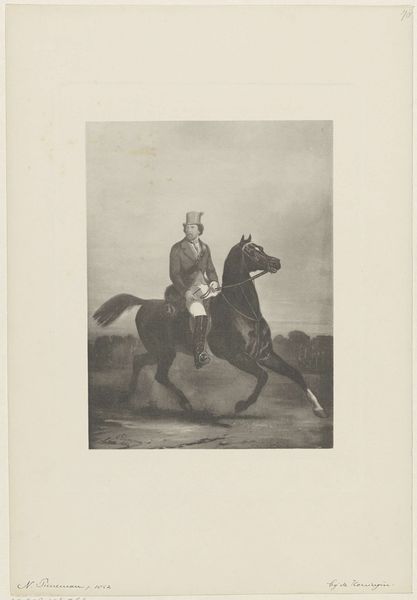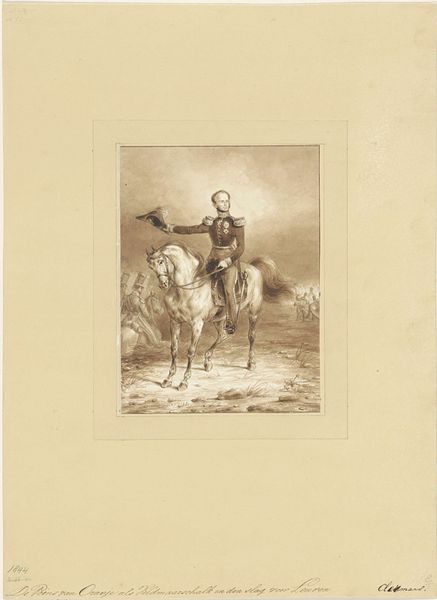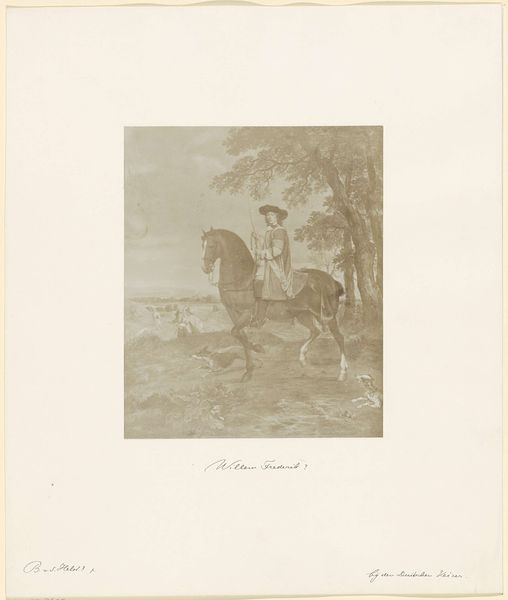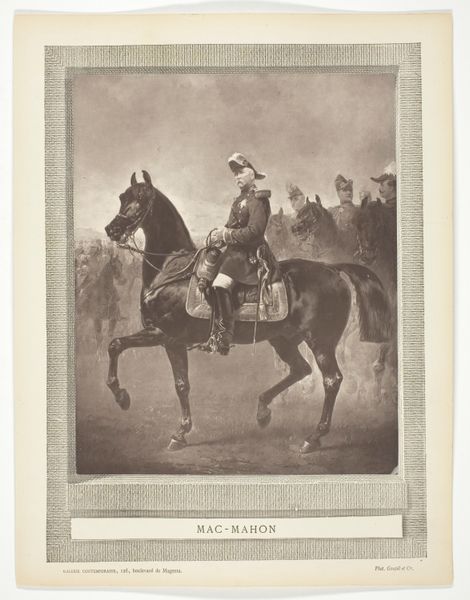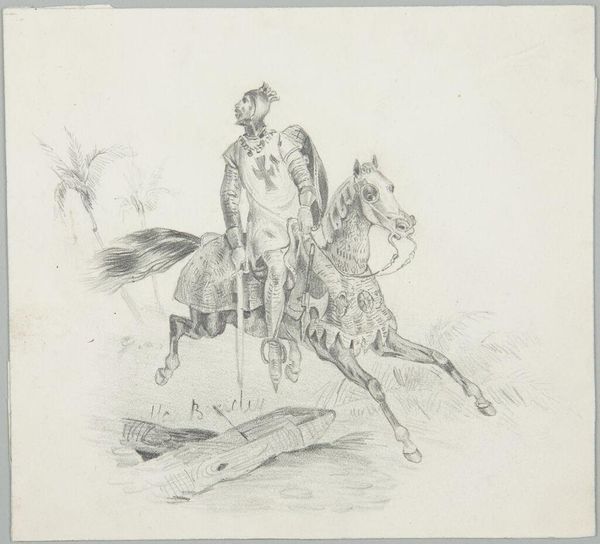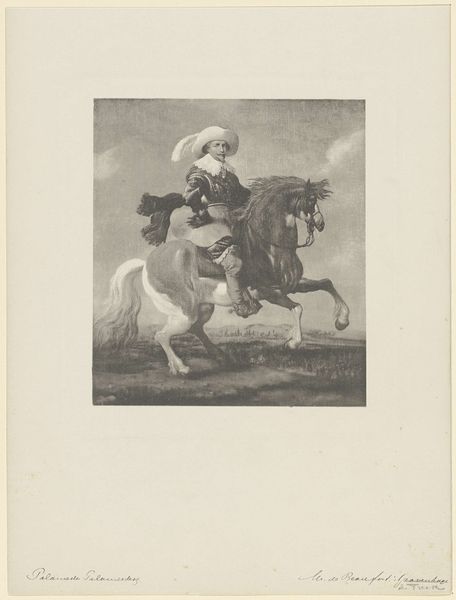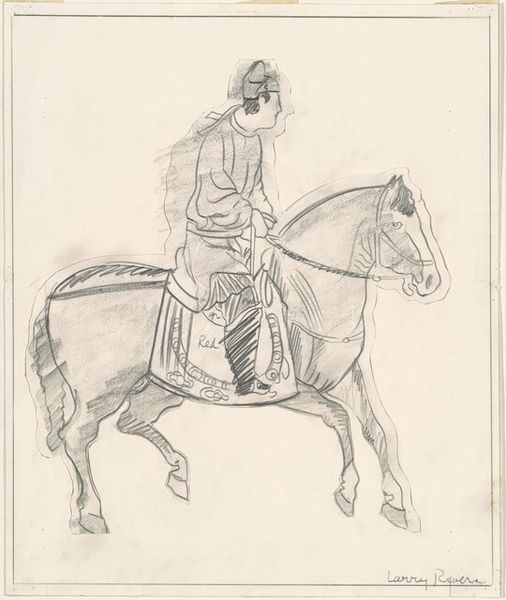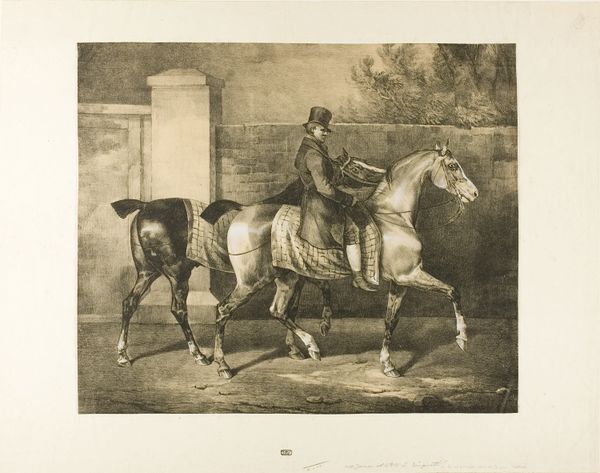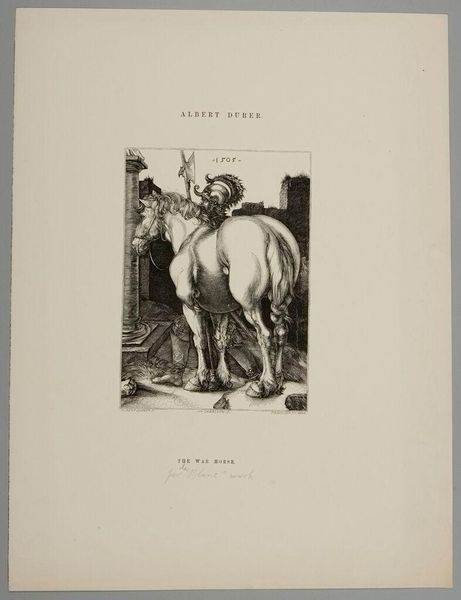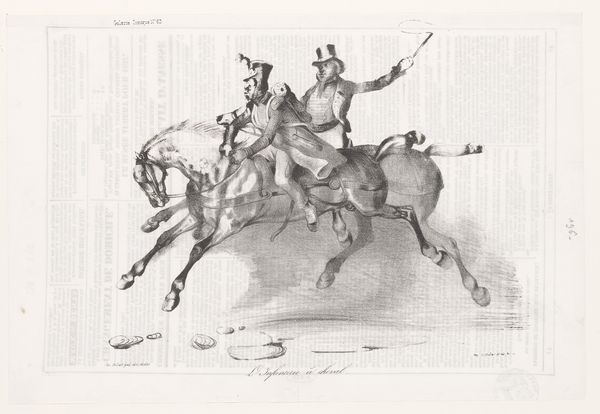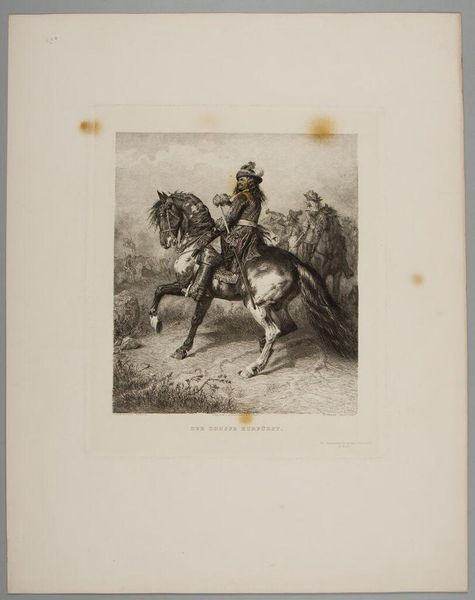
print, wood-engraving
#
pencil drawn
#
photo of handprinted image
#
light pencil work
#
negative space
# print
#
pencil sketch
#
white palette
#
charcoal drawing
#
pencil drawing
#
united-states
#
tonal art
#
remaining negative space
#
wood-engraving
Dimensions: 7 13/16 x 4 1/8 in. (19.84 x 10.48 cm) (image)11 7/16 x 9 3/16 in. (29.05 x 23.34 cm) (sheet, tabbed at corners)
Copyright: No Copyright - United States
Curator: This is Timothy Cole's "Saint Martin and the Mendicant," a wood-engraving from 1903, currently in the collection of the Minneapolis Institute of Art. The piece depicts Saint Martin, regal on horseback, encountering a beggar. Editor: It strikes me as stark, in its monochrome rendering, almost theatrical in its presentation of contrasting figures. The composition seems deliberately designed to highlight social divides, wouldn't you say? Curator: Absolutely. Cole’s print, reproduced from a work by El Greco, participates in a long history of representing charity and the power dynamics inherent in such acts. The print, in its medium, reduces the complexity and nuance inherent in oil on canvas and places figures from vastly different backgrounds in stark juxtaposition. The class implications are really front and center here. The material conditions of its production and the context of reproduction contribute to the dissemination of a powerful, if potentially fraught, message. Editor: The lines themselves are so precise, almost mechanical. What does the reproduction using wood-engraving, this very labor-intensive technique, tell us about Cole's engagement with the source material, with El Greco's work? He chose a craft that demands patience and a careful hand, a stark contrast to the instantaneity of photography, which could have been used as well to make copies. Is Cole trying to imbue this reproductive process with its own kind of artistic value and a new form of labor? Curator: It highlights the conscious mediation. Cole wasn’t merely replicating; he was translating, interpreting, adding a layer of meaning through his craft. His choice to manually engrave the design using wood signifies a deliberate slowing down of the reproduction, lending his copy the aura of the handmade. It reframes reproduction as a considered artistic process, yes, elevating craft. And thinking about how readily the image could circulate after such work really amplifies his role in its potential for cultural and social impact. Editor: That act of deliberate craftsmanship imbues the image with another layer of meaning, making us consider not just the figures depicted but also the work and social value involved in replicating the original artwork. A tension between mass production, access to imagery and how making operates with value. Curator: It is so thought-provoking to look at it from that vantage. Thank you! Editor: Thank you, that look into its role within intersectional narratives was great.
Comments
No comments
Be the first to comment and join the conversation on the ultimate creative platform.
